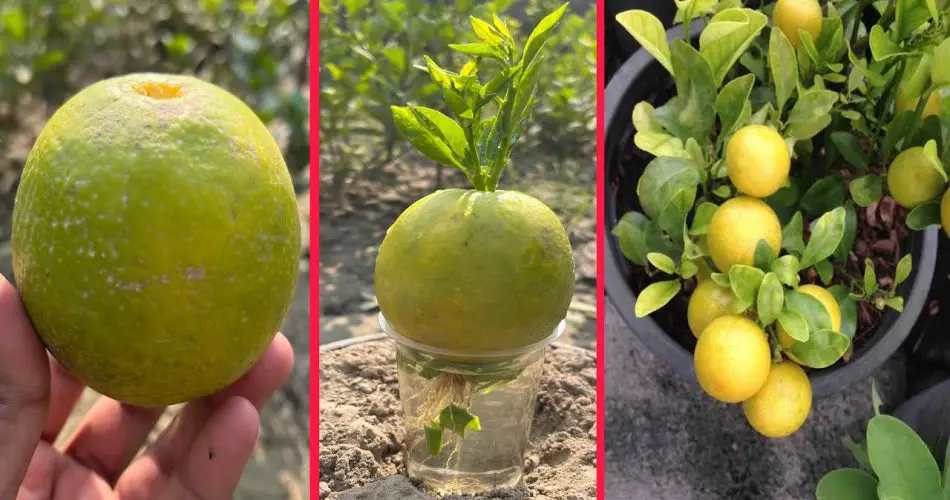Introduction: Growing lemon trees in your garden can be a delightful endeavor, especially when you discover the unique and easy method of incorporating lemon fruit and aloe vera. In this guide, we’ll explore a simple yet effective approach to cultivating lemon trees, harnessing the power of lemon fruit and aloe vera for healthy growth and abundant harvests.
Step 1: Selecting the Right Location To begin your lemon tree journey, choose a sunny location in your garden that receives at least 6-8 hours of direct sunlight daily. Lemon trees thrive in sunlight, so providing adequate sun exposure is crucial for their growth and fruit production. Ensure the soil is well-drained to prevent waterlogging, which can harm the roots.
Step 2: Choosing the Ideal Variety Selecting the right variety of lemon tree is essential for successful cultivation. Consider factors such as climate, available space, and desired fruit characteristics. Popular varieties include Lisbon, Eureka, and Meyer. Choose a variety that suits your preferences and growing conditions.
Step 3: Planting Lemon Trees Once you’ve chosen your desired variety, it’s time to plant your lemon trees. Dig a hole twice as wide and deep as the root ball and place the tree gently, making sure the soil level matches that of the container. Backfill the hole with soil and water thoroughly to settle the roots. Proper spacing between trees is important for optimal growth.
Step 4: Providing Adequate Water and Nutrients Consistent watering is crucial for the healthy growth of lemon trees, especially during the first year. Water deeply but infrequently, allowing the soil to dry slightly between waterings. Fertilize your lemon trees regularly with a balanced citrus fertilizer to provide essential nutrients for growth and fruit development.
Step 5: Harnessing the Power of Lemon Fruit and Aloe Vera Lemon fruit and aloe vera can be valuable companions for lemon trees, offering natural benefits that promote growth and resilience. Consider using lemon peels as a natural fertilizer by burying them around the base of your lemon trees. Lemon peels contain nutrients such as potassium and phosphorus, which can enrich the soil and nourish the trees.
Additionally, aloe vera can provide natural nutrients and support root development. You can use diluted aloe vera juice as a foliar spray for your lemon trees to enhance their vigor and resilience to stress. Aloe vera can also help improve soil structure and water retention, promoting overall plant health.
Step 6: Pruning and Maintenance Regular pruning is important for maintaining the shape and productivity of your lemon trees. Remove any dead, diseased, or crossing branches to encourage proper airflow and sunlight penetration. Additionally, prune to manage the size of the tree and ensure easy access to fruit for harvesting.
Step 7: Protecting Against Pests and Diseases Keep an eye out for common pests and diseases that can affect lemon trees, such as aphids, scale insects, and citrus leaf miners. Monitor your trees regularly and take prompt action if any issues arise. Consider using organic pest control methods or introducing beneficial insects to manage pest populations effectively.
Conclusion: Growing lemon trees with the assistance of lemon fruit and aloe vera is a unique and easy method that can yield healthy trees and abundant harvests of delicious lemons. By following these simple steps and incorporating lemon fruit and aloe vera into your lemon tree care routine, you can enjoy the satisfaction of growing your own citrus garden with minimal effort. Happy gardening!



